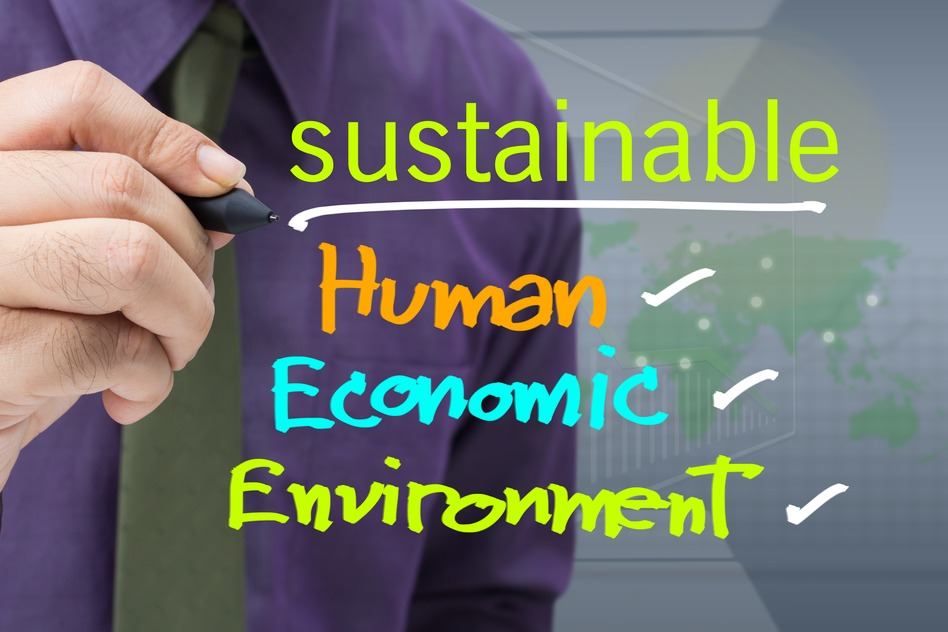
Sustainable and responsible fashion brands.
The equation is clear: “Fashion labels who haven’t ‘adopted’ sustainability are at risk on multiple fronts”, states Carol Gstalder, HR with Nielsen, in the report titled “The Sustainable Imperative”, published by this consulting firm. “Social responsibility is essential when implementing a program of proactive reputation. Textile companies with strong reputation perform better than others in terms of attracting the best talents, investors, community partners and, above all, consumers”.
Are social and environmental responsibility as in-demand as it seems?
Certainly. We are witnessing a process of changing habits that will be gradual but increasingly marked. Fashion labels who do not adapt to this new context have the same outlook as the low quality t-shirts they produce. However, those who choose sustainability and social values, will come out stronger.
The new ‘boutique’ brands that make these principles their rule of thumb are not the only ones who are betting on this trend. The giants of the textile industry and large distribution companies also seek to connect with conscious and responsible consumers through sustainable ranges and marketing actions focused on promoting their efforts in terms of reducing their environmental footprint, among other positive aspects.
Brands listen as numbers speak.
From the survey conducted by Nielsen, some interesting conclusions can be drawn on this matter that is definitely more complex than it seems. Next, we will discuss some of the salient points.
– “Consumers want more products that are healthy, convenient, affordable and environmentally friendly. In fact, there is a discrepancy between the percentage of consumers who want more of these products (26%) and those who say they buy them (10%)”.
– “There is a gap in the availability of these products; a shortage of inventory, perceived or real, that leads to the creation of new companies”.
– In a world full of options, choosing a brand over another is an action influenced by an important number of factors. “As concerns over the protection of the environment and corporate social responsibility continue gaining traction around the world, knowing the relationship between the consumers’ feelings that lead to a purchase is more relevant than ever”. In this regard, the reputation of a brand is fundamental: 62% of consumers make purchases influenced by that factor. But that is not the only thing that motivates them to select a product.
– “When it comes to selling, 45% of the people surveyed reported that a commitment with the environment is capable of influencing the purchase of a product. Responsibility with both, the consumer’s community and social values, is essential. These aspects impact 43% and 41% of respondents, respectively”. On the other hand, “in 2014, 65% of total sales on a global scale were generated by those brands whose marketing efforts are based on their commitment to the environment and social values”.
– The above data “indicate an opportunity for textile labels that have already built a high level of trust among their consumers to assess the best time to introduce in the market sustainable products to increase growth. In a different analysis, global consumer brands that ignore sustainability will reduce their reputation and put their business at risk. This gives competitors of all sizes the chance to build trust with predominantly young and conscious consumers who seek brands in line with their own values”.
– 41% of respondents reported that an “eco-friendly packaging” influences them when shopping. While 35% said that watching a TV ad that portrays the positive effects a brand is generating on the environment and the community has an influence when it comes to choosing products from that company.
– In view of the power that television campaigns have when it comes to influencing a purchase, “brands that actively reinforce their social values should amplify their message using different communication channels”. But that’s not all, “credibility and trust are fundamental. It’s important to use different platforms and communication methods, as is validation from third parties, annual reports, news coverage, volunteer actions, affiliation to NGOs with good reputation and a website to report the work done within a community”.
¿Are you willing to pay more for sustainable products?
In 2015, sixty thousand respondents from sixty countries answered this question: 66% replied positively. In 2014, 55% of responses were positive, and 50% in 2013. 
Who are those people?
– While the importance given to sustainability when it comes to making a purchase is consistent in all regions, overall rates were lower in developed countries than in Africa, Asia, Middle East and Latin America. Consumers in these areas are more aware of their communities’ needs, as they face challenges that move them on a daily basis and are willing to “give back” and help others.
– In line with this, consumers from developed countries are harder to influence regarding sustainability.
– In terms of age, baby-boomers can’t be left out: “between 50 and 60% of the people from this generation will pay more for these products”.
– The prominence given to sustainability is consistent at all levels of income, but there is a slight difference: “People with a yearly income of 20,000 USD or less are 5% more likely to pay more for these products than those making 50,000 USD or more”.
– Within the 66% of respondents around the world willing to pay more, over 50% are influenced by key sustainability factors, such as a company being environmentally friendly (58%)9, or known for its social commitment (56%). To this group of individuals, values are more important than personal benefits.
Five ways the fashion industry can jump on this trend.
1. Almost 3 in 4 consumers under the age of 35 are willing to pay more for sustainable products. In this regard, focusing on that generation is key.
Preferred brands among the young are starting to be those who include sustainability and corporate social responsibility as their values.
2. Highlighting the trust generated by a brand and its social and environmental commitment to influence purchases.
Several brands are launching eco-friendly and sustainable collections to try and get closer to this new generation of conscious consumers.
3. Boasting a strict sustainability strategy
Companies are committed to reaching “zero” waste generation by controlling their global supply chains and sourcing.
4. Supporting effors with great marketing strategies
Planning and implementing different marketing strategies to convey to consumers the brand’s commitment to the environment and the community. Professionals in this field “claim this concept is a fun way to promote sustainability without the need to speak directly about the environment or the rights of textile workers”.
5. Lastly, do not lose sight of your audience.
“In order to beat the competition you must have a deep understanding of your consumers’ expectations. Different marketing tactics can have varying levels of effectiveness based on region, category and age of your target audience”, is the final suggestion of the survey conducted by Nielsen.
Bottom Line.
Referring back to what I said at the beginning of this article, we are in a scenario of new opportunities where fashion labels can make a difference by connecting with their consumers through a sustainable and responsible corporate approach.
We, from the area of textile sourcing in origin, are the main actors of this profound transformation, and we must make it possible. I have no doubt we are ready for this and for achieving these objectives.
In the next articles, we will analyze how fashion brands are positioning themselves in this new scenario.
It has been a pleasure sharing this information with all of you!
You can also find this article published in my Blog de Modaes.es












































